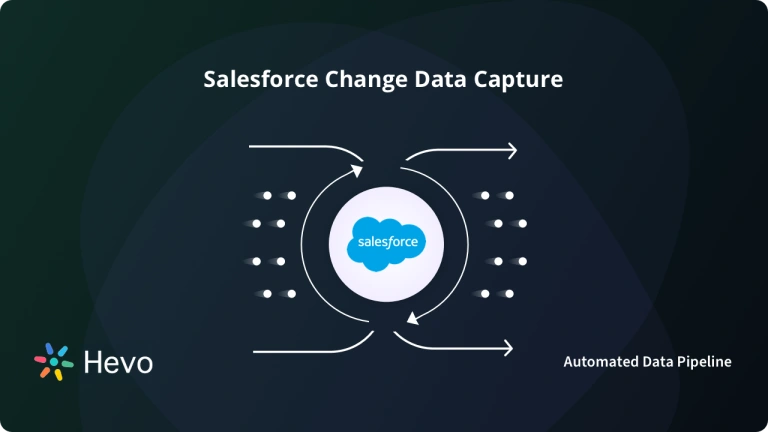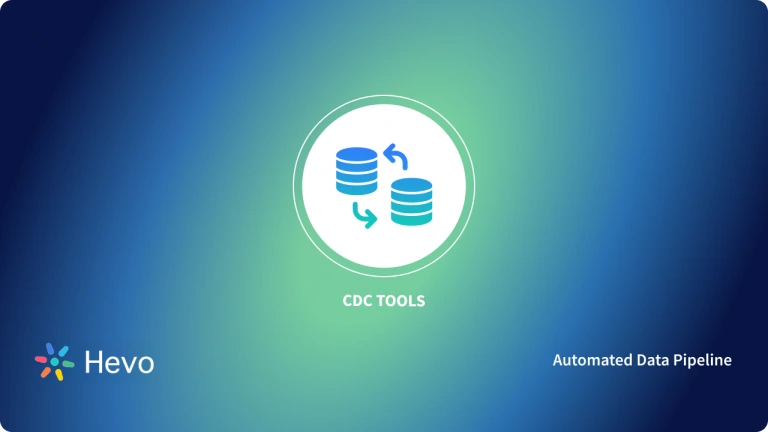As data grows at a massive scale, industries are adopting new ways to manage data effectively. One of the most popular techniques for managing data is CDC. The benefits of change data capture (CDC) enables organizations to capture changes made to data sources.
It captures database changes and stores them in destinations like a data warehouse with the help of many CDC tools available in the market. CDC allows businesses to streamline data replication processes to ensure that all information is captured in real-time. This facilitates better analytics and disaster recovery.
Such benefits make change data capture a go-to technique for moving data from source databases to destination systems. This article discusses the definition, types, and benefits of change data capture for organizations.
As you learn about Airflow, it’s important to know about the best platforms for data integration as well. Hevo Data, a No-code Data Pipeline platform, helps to replicate data from any data source such as Databases, SaaS applications, Cloud Storage, SDKs, and Streaming Services, and simplifies the ETL process.
It supports 150+ data sources (including 60+ free data sources) like Asana and is an easy 3-step process. With Hevo’s transformation feature, you can modify the data and make it into analysis-ready form.
Check out some of the cool features of Hevo:
- Completely Automated: Set up in minutes with minimal maintenance.
- Real-Time Data Transfer: Get analysis-ready data with zero delays.
- 24/5 Live Support: Round-the-clock support via chat, email, and calls.
- Schema Management: Automatic schema detection and mapping.
- Live Monitoring: Track data flow and status in real-time.
Table of Contents
CDC Definition

CDC identifies and detects database changes and then delivers those changes to a data warehouse or a downstream process in real-time. Whenever a change occurs in a source database, an action is taken by another system or process to replicate that change. As a result, businesses use CDC to ensure that the data at the source and the destination are in sync.
The benefits of change data capture help to identify the rows in source tables that have changed since the last replication. They can replicate transactional changes to data. This includes new data being added to a table, historical data being deleted, or existing data being updated. These changes are mostly from create, update, and delete operations on databases.
Key Methods for Implementing CDC
- Log-based CDC
The log-based CDC process reads the transaction log of the source database. By reading the transaction log, businesses can get a complete list of all data changes in their databases. This is mostly used to restore after a system failure based on the log data.
- Trigger-based CDC

In trigger-based CDC, businesses can capture all the inserts, updates, and deletes operations performed on the databases. However, a trigger is initiated for every change to update a ‘change table,’ which leads to additional tasks and overheads. As a result, log-based CDC is preferred over trigger-based CDC.
- Timestamp-based CDC

Generally, timestamps refer to the date and time. In timestamp-based CDC, the source table has either CREATE or UPDATE timestamps for every row. It can detect whether a row was created or updated.
How does Change Data Capture work?
Change Data Capture (CDC) is a technique that can track and capture database changes in real-time very efficiently, unlike having to do frequent table scans or full data loads. Only the changes, such as inserts or updates, or deletes, are identified and then processed instead of scanning the whole thing time and again. This does not have to fill up the database or consume unnecessary resources; simultaneously, it maintains the data warehouse or other application systems in correct synchronization.
Some CDC approaches involve methods that are log-based and trigger-based. Log-based CDC reads changes from the transaction logs of a database, thus being low impact but highly accurate in catching changes. Trigger-based CDC, on the other hand, relies on database triggers that record changes in another table that can be worked through. Both these ensure business’s efficient data pipelines remain updated, hence improving capabilities for data integration and real-time analytics.
Benefits of Change Data Capture
Data-driven organizations use CDC for several advantages. Here are some of the benefits of change data capture:
- Real-time business intelligence: Today, analytics is a major differentiator for businesses that collect or generate a colossal amount of data. However, without a proper system in place, it becomes challenging to manage big data for analytics.
- By embracing CDC, organizations can expedite the collection and organization of data for quick analytics. Since collection and transformation happens in real-time with CDC, organizations can store the data in data warehouses for better business intelligence.
- Reduce the need for intensive resources: One of the benefits of change data capture is that you can optimize resource utilization to reduce operational costs. In organizations, performing large batch operations on the data becomes inefficient, slow, and needs intensive resources.
- With CDC processes, organizations monitor and extract database changes in real-time, which requires fewer computing resources and provides better performance. Instead of waiting for large batch jobs that might take a day to run, CDC processes data into micro-batches, thereby optimizing resource utilization.
- Eliminate pressure on operational databases: If you use operational databases to monitor activities, perform analytics, and audit historical data, it would negatively impact the performance of the database. To avoid performance issues, CDC is used to create a copy of operational databases that are constantly refreshed and can be accessed by different users.
- As traffic is diverted to operational database copies, the pressure on operational databases is reduced. As a result, one of the major benefits of change data capture is that the operational databases rarely face issues like poor performance or unanticipated downtime.
- Reduce incompatible databases issues: Often, companies witness compatibility issues while connecting two or more databases. But with CDC, companies enhance their capabilities to integrate with various software that is mostly incompatible with in-house databases.
- It allows organizations to be more flexible while choosing business applications. As a result, teams in organizations can focus on their business goals rather than spending time on database compatibility issues.
- Disaster recovery or backup plan: As data replication is carried out in real-time, one of the key benefits of change data capture is it helps to create backups of mission-critical databases. In the event of system failures, data in replication can be used to recover the primary databases. This is essential for organizations where failure can lead to significant business loss.
- Improves master data management system: A master data management system is part of an organization that consolidates all essential data in one place. Teams in organizations use CDC processes to draw database changes from multiple databases and update the master data management system continuously.
- Different departments can then access data from master data management and use it for reporting and analysis. This helps businesses enhance the accuracy of data-driven decisions in less time.
- Enhance data security: One of the great benefits of change data capture is that it empowers you to manage data accessibility as well. This enhances data security as you can control the flow of data based on the sensitivity of the collected information. Such practices ensure that you comply with the different data protection laws of different countries.
- Obtain competitive advantage: As CDC enables data collection in real-time, teams across organizations access recent data for making data-driven decisions quickly. With CDC, companies can improve the speed and accuracy of decision-making in real-time. This provides companies with a competitive advantage over competitors that rely on batch processing for data management.
Change Data Capture Use Cases
Change Data Capture (CDC) is now an essential component for all modern data use cases, especially within real-time data integration and synchronization. Its most popular application can be seen within real-time data warehousing, where changes made to the operational databases are immediately reflected within the data warehouses that can be analyzed in real-time for the development of business intelligence to support decisions based on the most current information without waiting for batch processing.
Another widespread use of CDC is in data replication and migration because it makes it easy to transfer only changed data between systems, in terms of the amount of data that needs to be transferred and elimination of downtime. Moreover, CDC feeds event-driven architectures by transferring action triggers based on changes in data-in-transit, such as updating downstream services when a customer’s order has been changed. Moreover, it fulfills all the needs of audit and compliance since it saves an entire history of changes for regulatory purposes. CDC makes sure that data is in synch seamlessly between these distributed services in the environments of microservices and, thus, maintains consistency without any kind of central bottlenecks.
Conclusion
Today, organizations replicate data to support various reasons like high availability, better analytics, data management, and seamless integrations among databases. CDC techniques help you capture real-time changes made to databases and stream these changes to external processes, applications, or other databases.
Based on the operation and business requirements, you can select from different types of CDC to harness the benefits of change data capture.
You can enjoy a smooth ride with Hevo Data’s 150+ plug-and-play integrations (including 60+ free sources. Hevo Data is helping thousands of customers take data-driven decisions through its no-code data pipeline solution. Try a 14-day free trial and experience the feature-rich Hevo suite firsthand. Also, check out our unbeatable pricing to choose the best plan for your organization.
Frequently Asked Questions
1. Does change data capture affect performance?
It certainly influences the performance, especially in case of a large number of data changes. CDC would call for more processing to track and store changes. However, in proper implementation and optimizations, this influence could be minimized, and data updates do not have an influence on the performance much.
2. What is the value of data capture?
The value of data capture lies in the very nature of tracking changes in real-time to any data so that there can be effective analytics and proper timely decisions. It improves the accuracy of data and its integrity because all modifications are logged into the systems, thus ensuring improved data synch going across and within systems.
3. When to use a CDC?
Use change data capture (CDC) when you want to track incremental changes in real-time data and then synchronize those for purposes of analytics reporting or replication. It’s a great choice for applications that need updates in real-time but will not tolerate full refreshes; think about data warehousing or real-time monitoring.






